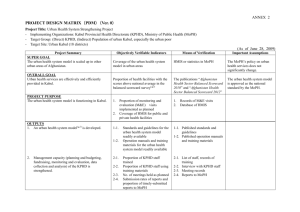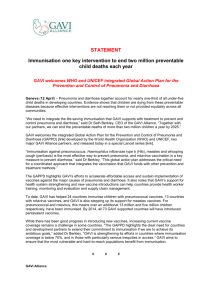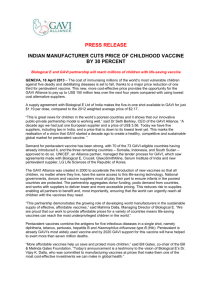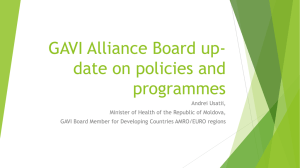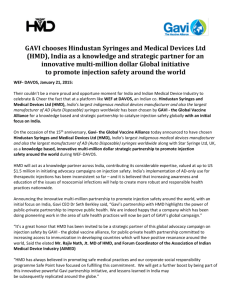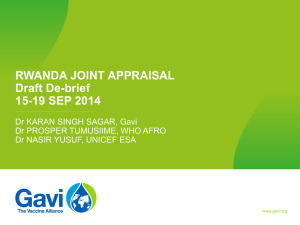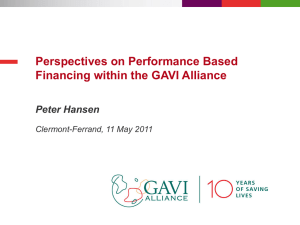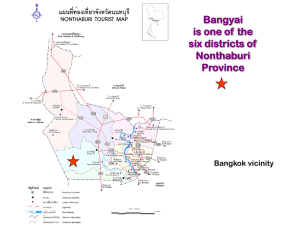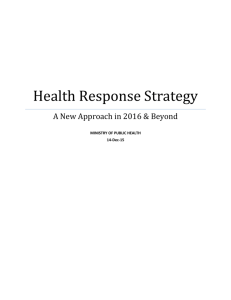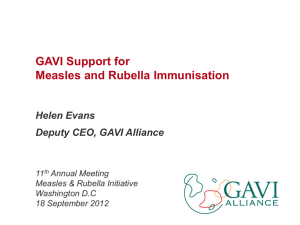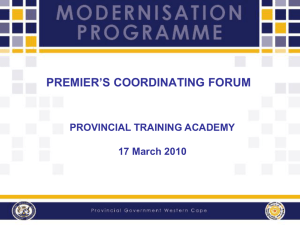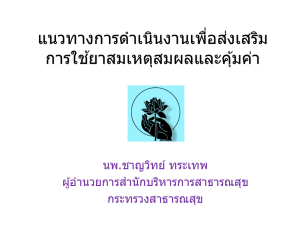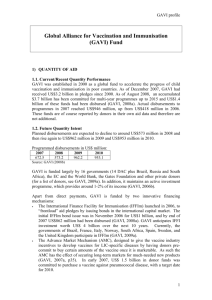Monitoring and Evaluation Strategy
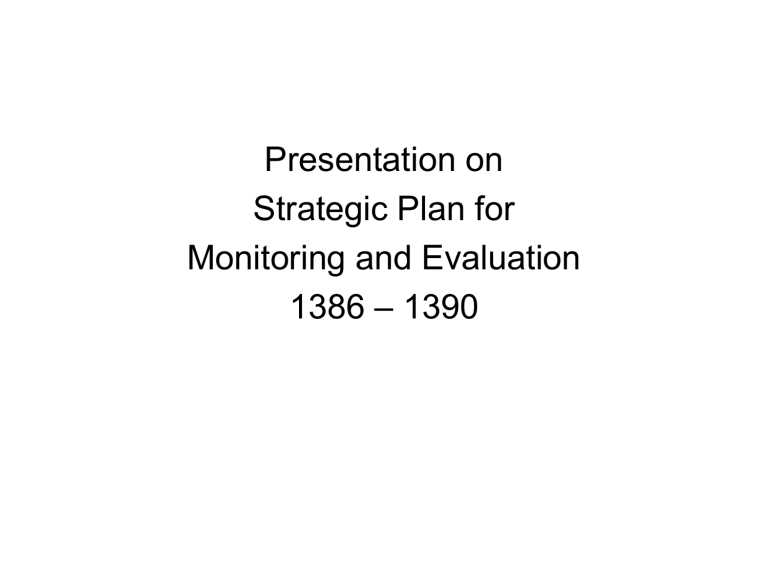
Presentation on
Strategic Plan for
Monitoring and Evaluation
1386 – 1390
Monitoring and Evaluation Strategy
• Stewardship is one of the MoPH’s primary responsibilities
• The MoPH has an obligation to monitor and evaluate its programs and their impact
• Also to provide and support a strategic plan for monitoring and evaluation
• Relies on set of evidence-based initiatives
The purpose of the M&E
Directorate
• To monitor and evaluate health services and their impact
• To provide the best available information on priority indicators
• To provide relevant, high quality data and information on health system performance
• To coordinate the design and use of monitoring and evaluation plans and systems at the MOPH.
(Integration of System)
Current M&E Organizational Chart
M&E Director
M&E Officers (8) Temporary Staff Support Staff (2)
Information sources
• Health Management Information System (HMIS)
• National Health Services Performance
Assessment (NHSPA)
• Disease Early Warning System (DEWS)
• Human Resources Data Base
• Research and Informatics Department
• Technical departments of the Ministry
• Results from other assessments and studies
Priority indicators
• Multiple lists of indicators exist within MOPH
– MDGs
– ANDS
– National Health and Nutrition Sector Strategy
– Program Budgeting
– Individual programs and departments
• There is a clear need to align these lists
• M&E Strategy is an opportunity to achieve this alignment
STAKEHOLDERS
• Afghan Public Health Institute (APHI)
• Health Management Information System
Department (HMIS)
• Research and Informatics
• Provincial Public Health Directorates
• Additional Key Partners
– GCMU
– Nutrition, EPI, RH, NACP, TB, Malaria, Blood Bank
Stakeholders
• World Bank
• USAID
• EC/EPOS
• (MSH)/TechServe
• JHU/IIHMR
• CDC
• UNICEF, WHO
• Global Fund
Scope of work of M&E Directorate
• Providing updated information on:
• Priority Health Indicators
• Afghanistan Health Fact Sheet
• Integrated data from disease, nutrition or other surveillance
• GAVI Alliance, Country Coordinating Mechanism,
Global Fund and other institutional donors
• An archive of data sources and information about the health sector
• Database for the National Monitoring Checklist
Scope of work (Continued)
• Conducting performance assessments of health service delivery, including:
– BPHS: National Health Services Performance
Assessment and Balanced Scorecard
(annual)
– EPHS and other provincial hospitals: Hospital
Performance Assessment (annual)
– Special investigations of health services (ad hoc)
Scope of work (Continued)
Advising and development
Reviewing the M&E sections of key MOPH strategies (e.g., IEC, reproductive health, HIV,
TB, malaria, etc,)
Chairing the weekly Monitoring and
Evaluation Advisory Board meetings
Conducting background research for
Information Group meetings (chaired by the
Deputy Minister for Technical Affairs)
Scope of work (Continued)
• Promoting data utilization and a culture of data
– Training on data analysis and utilization
• Workshops on data use, sharing of results and other activities with stakeholders and provincial personnel and national program managers
– Discussing results with technical staff, managers and decisionmakers
• Presentations and discussions at Provincial Public Health Director quarterly meetings
• Presentations and discussions during missions, as well as regular and ad hoc forums at Central MOPH
– Putting reports and other results on the MOPH web site
– Sharing with the media press releases, presentations, fact sheets and copies of reports
Scope of work (Continued)
• Communicating
– Communicating results and their policy and programmatic implications to the MOPH leadership, etc.
– Communicating results with their policy and programmatic applications to provincial and district levels
• Capacity building
– Building the capacity of central and provincial MOPH staff on the use of available tools
• Intensive short courses
• Regular courses
• Ongoing technical support and interaction
Requirements for further development of the
M&E Directorate
• Increasing the organizational capacity of the M&E Directorate to be able to carry out the functions now carried out by
JHU/IIHMR
• Capacity building of the expanded M&E
Directorate
• Adequate funds
Suggested organizational chart with proposed funding source
M&E Director
(MoPH)
Policy/Strategy
Implementation
Incentive (Gavi)
PRRed
(Admin/Achiev ing)
Incentive
(Gavi)
(Data
(Management)
Salary –
MoPH
Incentive
(Gavi)
GCMU
Consultants
GCMU
M&E Officers
(14)
MoPH
M&E Officers
(Spl. Services)
MoPH
2 Support Staff
(Gavi)
2 Drivers
(GAVI)
Monitors (5)
(GAVI)
Capacity building
• 12 Month Course (System Sustainability)
(funding GAVI)
• Technical assistance from EPOS,
JHU/IIHMR, MSH/TechServe, others
• GIS, Web-based Data Info System
(Hardware and Software- GAVI. Technical assistance and Training – EPOS)
Resource Requirements
• Accommodation (Container) – GAVI
• Equipment – GAVI
• Communication – GAVI
• Transport - GAVI
Resource Requirements
• Data Sharing Workshop for PHDs and program managers to take evidence based policy decisions.
• Improving M and System at the provincial level (provision of resources and capacity)
• To implement the National Monitoring
Checklist
Resource Requirements
• Special monitoring missions for providing evidence based information to facilitate decision making for the authorities.
• National Health Service Performance
Assessments
– BPHS (from April 2008)
– EPHS (from April 2008)
The way ahead
• Endorsing M and E Strategy.
• Resource allocation (MoPH and Donors).
• Up grading structural set up and integration of system.
M&E Activities supported by GAVI
• Two-day Workshop for 34 PHDs twice a year
• Missions (3 persons per team X 7 days X
8 Provinces) per month
